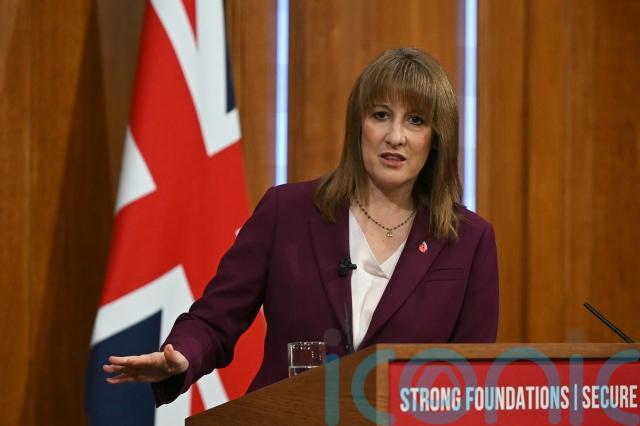
The Bank of England has kept interest rates at 4%, despite some economists predicting that the central bank would opt for a cut.
In a tight decision, five of the nine-strong committee of rate-setters voted in favour of maintaining the interest rate.
It came despite the Bank indicating that inflation has now “peaked” and that unemployment is likely to rise beyond previous expectations.
Here the PA news agency looks at what the decision means and what the Bank expects to happen to the economy.
– What happened to interest rates on Thursday?
The Bank of England’s Monetary Policy Committee (MPC) maintained the base interest rate at 4% in their November meeting.
The nine-member committee made the decision after a close vote.
The Monetary Policy Committee voted by a majority of 5-4 to keep interest rates at 4%.
Find out more: https://t.co/GHHt7QdrbF#InterestRates #BankOfEngland #BoE pic.twitter.com/hH34J8y85Z
— Bank of England (@bankofengland) November 6, 2025
Five members, including governor Andrew Bailey, voted to keep rates at 4%, while four members voted to reduce it to 3.75%.
It is third meeting in a row where rate-setters have voted for the 4% rate, but rates have been moving lower since the start of last year, when they peaked at 5.25%.
– What does it actually mean?
The base rate helps dictate how expensive it is to take out a mortgage or a loan.
Mortgage borrowers therefore typically seek a reduction in interest rates in order to help bring down variable rates, or to allow for lower mortgage rates when they next re-mortgage.
However, a range of lenders still reduced their mortgage rates on Thursday despite the decision to hold rates.
Experts said suggestions from the Bank that inflation has now peaked and predictions that there will still be a “gradual” downward path for rates helped drive mortgage costs lower.
David Hollingworth, associate director at L&C Mortgages, said: “The fact that the outlook for rates has improved has already resulted in a reduction to the cost of funds for lenders and there’s been a raft of cuts to fixed rates already.”
– What about inflation?
Raising interest rates is the central bank’s main way of reducing inflation – the measure of how fast prices increase over time.
The UK’s main measure of inflation, CPI (consumer price index), was reported at 3.8% in September, marking the same level as the two previous months.
The Bank said it therefore now believes that inflation has now “peaked” and will dip to nearly 3% early next year.
It added that inflation is on track to drop to the Bank and Government’s 2% target by 2027.
Easing food prices and wage increases are expected to drive the steady decline in inflation.
– When will rates next fall?
Andrew Bailey, governor of the Bank of England, said policymakers “think rates are on a gradual path downwards” despite the cautious vote on Thursday.
The Bank’s committee said they will be looking for signs that inflation is on track to fall as expected before cutting interest rates further.

Data later this month is predicted to show that inflation fell in October, while November is also expected to show another drop in inflation.
Economists have therefore predicted that the Bank will vote for a cut to 3.75% when rate-setters meet again on December 18.
“A December rate cut certainly seems more likely, after today,” according to Investec’s Ellie Henderson.
The financial markets are currently predicting that interest rates will settle at around 3.5% in the longer term.
– What about the jobs market?
The Bank painted a more pessimistic picture about the state of the UK’s labour market in their latest report.
The UK unemployment rate is now on track to peak at 5.1% in the second quarter of 2026, compared with a previous predicted high of 5%, according to the Bank.
The Bank also slightly increased its unemployment projections for the next two years.
It came as research from Bank staff showed “nearly half” of companies said they “had already lowered employment by more than they would otherwise have done” due to increases to employer National Insurance Contributions.
There are concerns that further pressure on UK business could lead to a continued reduction in jobs vacancies.
– What does this mean for the Government?

The decision to hold rates came amid a backdrop of heightened speculation regarding the Chancellor Rachel Reeves autumn budget later this month.
Mr Bailey said on Thursday that it will be “really important” to see more economic data before its next decision in December, at which point the MPC will have also been able to assess the fiscal policies set out by Ms Reeves.
Ms Reeves is widely expected to raise taxes in the Budget to meet spending plans and to balance the books, with Government finances coming under pressure from higher borrowing costs over the past year.
In response to the Bank’s latest report, Ms Reeves highlighted the Bank’s forecasts showing a steady reduction in inflation as she said she will make “fair choices” at the budget.
Subscribe or register today to discover more from DonegalLive.ie
Buy the e-paper of the Donegal Democrat, Donegal People's Press, Donegal Post and Inish Times here for instant access to Donegal's premier news titles.
Keep up with the latest news from Donegal with our daily newsletter featuring the most important stories of the day delivered to your inbox every evening at 5pm.